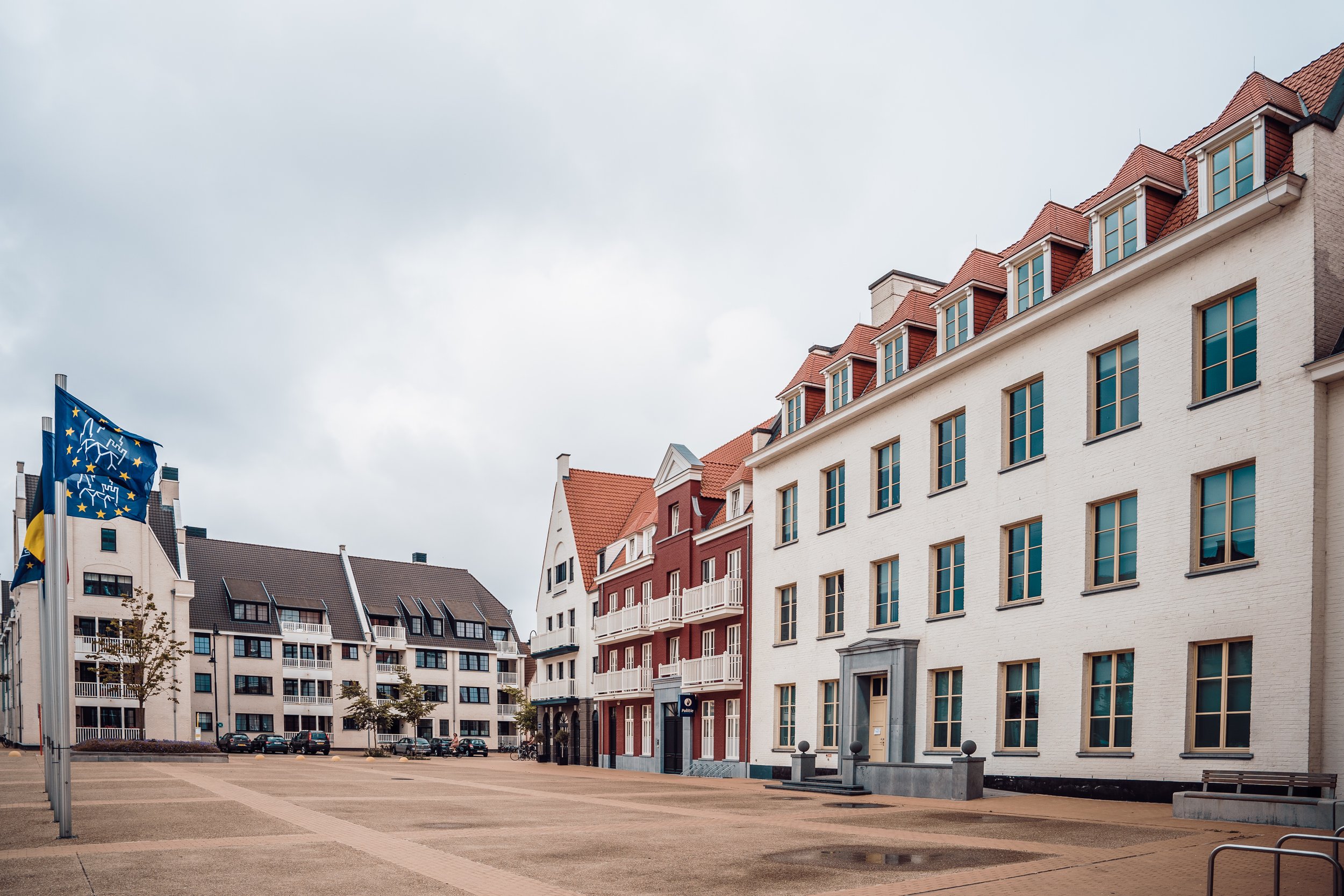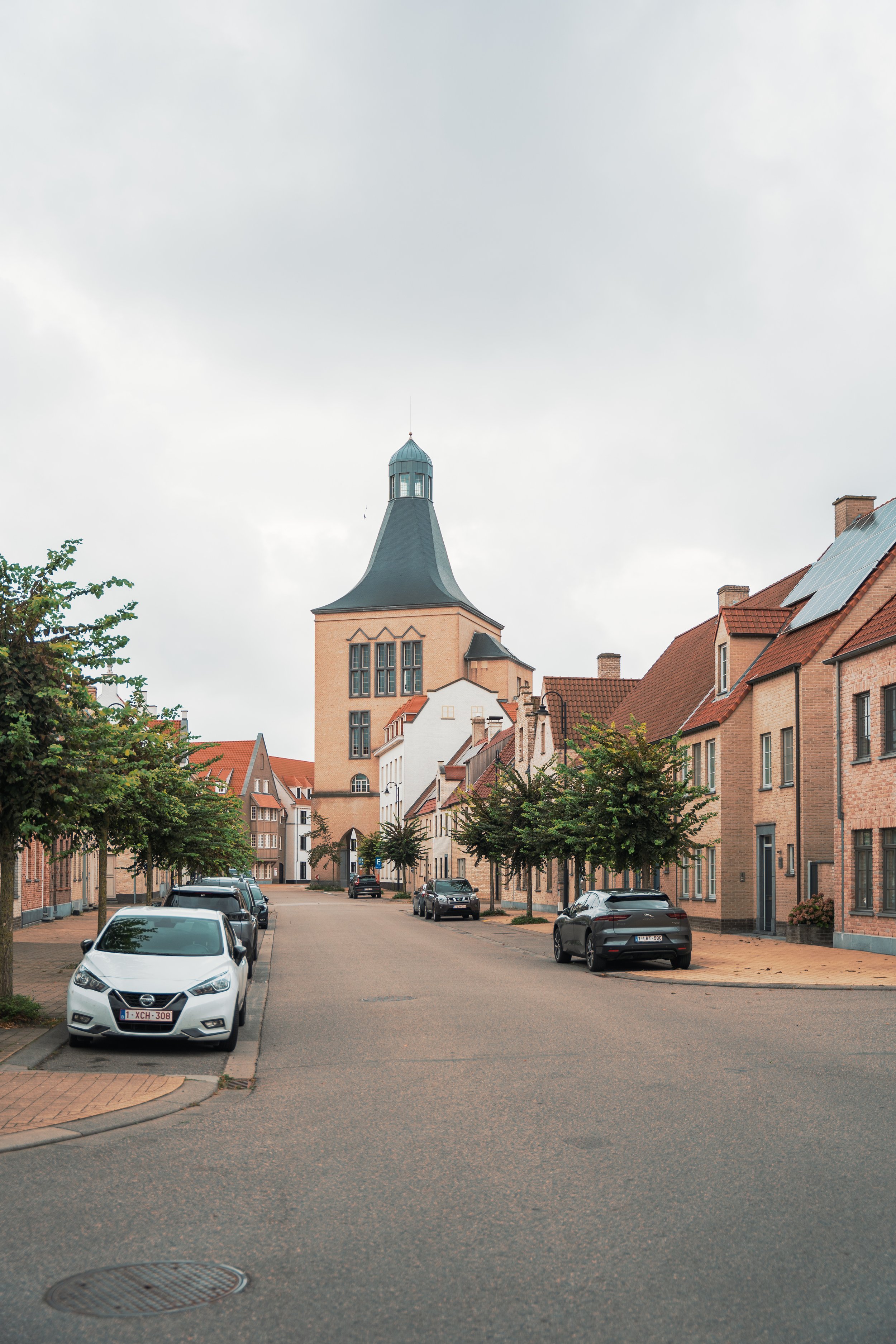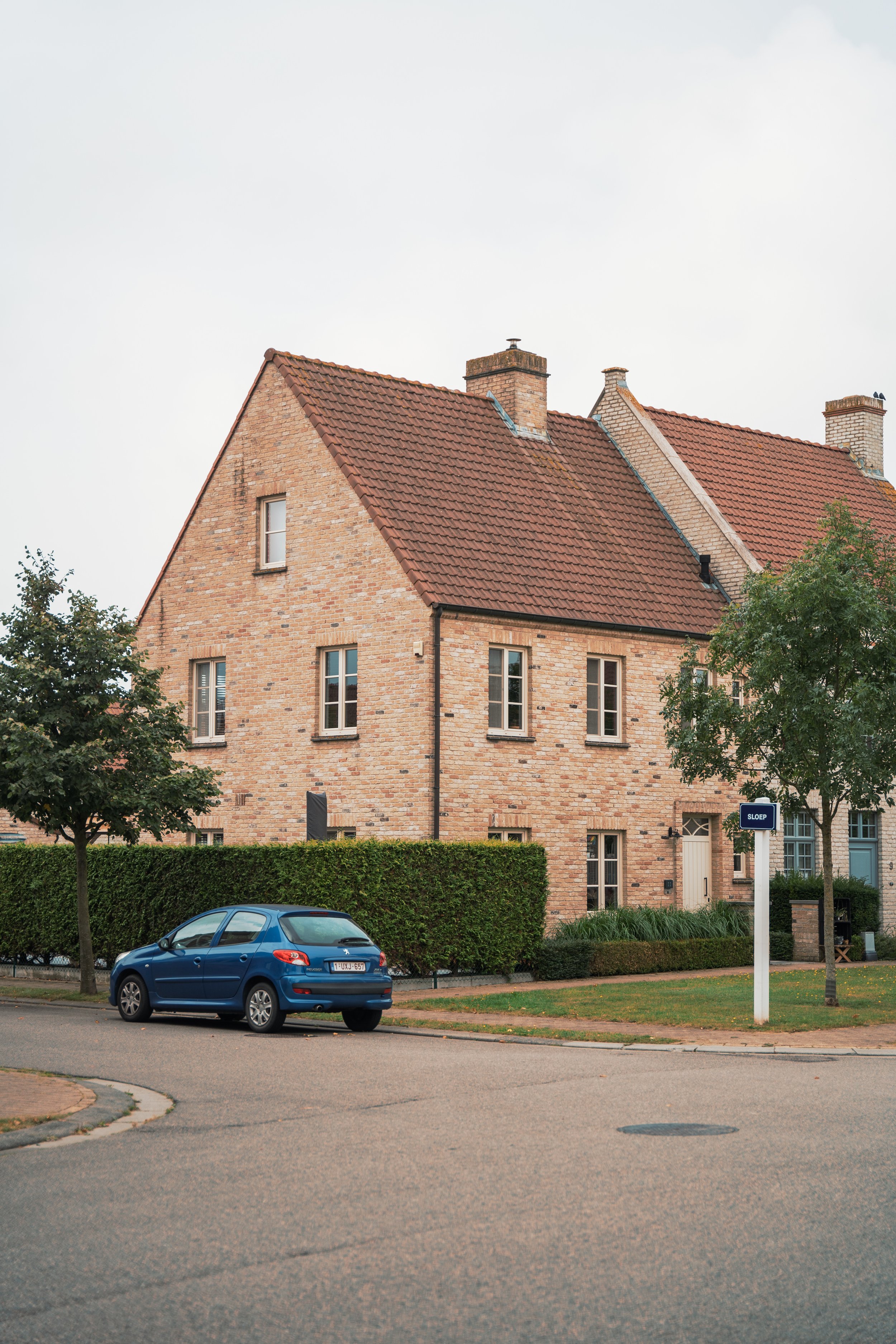Heulebrug, located in Knokke-Heist, Belgium, is a modern neighborhood that successfully revives the principles of traditional urbanism in a new development.
Built in the early 2000s, Heulebrug was designed to create a human-scaled, livable environment that contrasts sharply with many car-centric suburban expansions. With its focus on walkability, community, and classic architectural styles, Heulebrug has become a beloved residential area that proves traditional urban design principles are still highly relevant today.
The neighborhood was developed with a strong emphasis on creating a pedestrian-friendly environment. Streets are designed to slow traffic naturally, and the layout prioritizes cyclists and walkers. The town plan features a series of green spaces, parks, and central squares, creating a place where residents can gather, children can play safely, and social interactions are encouraged. This focus on human interaction is further enhanced by the mix of housing types and social amenities, making Heulebrug a diverse and inclusive community.
Architecturally, Heulebrug embraces a vernacular style that reflects Belgium’s local traditions. The buildings use materials and design elements that give the neighborhood a sense of timelessness and charm. The traditional facades and carefully crafted details add to the overall aesthetic appeal, creating a neighborhood that feels both familiar and unique. Heulebrug avoids the monotony of many modern developments by incorporating variation in its building styles, making it visually interesting and cohesive at the same time.
One of the neighborhood’s greatest strengths is its connection to nature. Heulebrug is integrated with the surrounding landscape, with ample green corridors and parks, offering residents easy access to nature. This focus on greenery not only enhances the livability of the area but also makes it a healthier, more sustainable place to live.
Despite being a relatively new development, Heulebrug has quickly gained popularity and is seen as a model for how traditional urban principles can create vibrant, livable communities. Its success shows that a return to classic town planning methods—emphasizing beauty, walkability, and community—can result in places that people genuinely love to call home.








